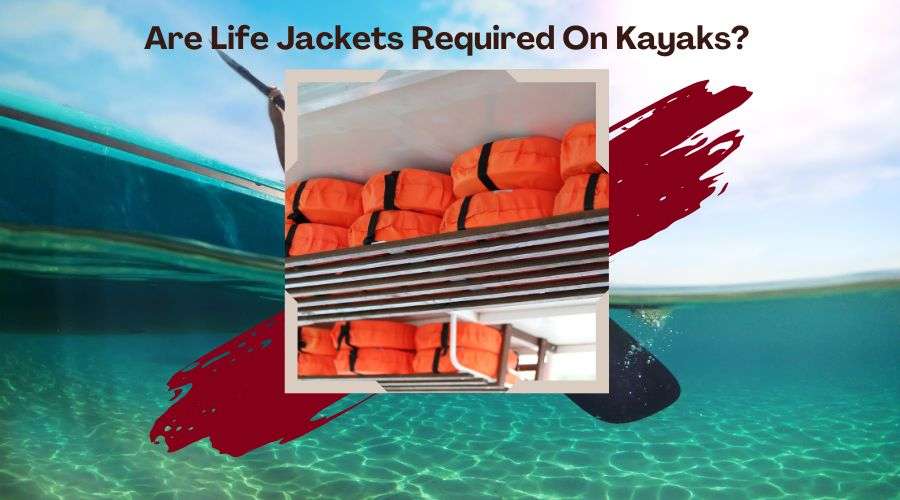
Kayaking is a popular water activity that offers individuals a thrilling way to explore rivers, lakes, and coastlines. While the freedom of paddling through scenic waters is exhilarating, it's essential to prioritize safety. One crucial aspect of water safety for kayakers is the use of life jackets. In this guide, we will delve into the requirements and regulations surrounding life jackets for kayaks, ensuring a safe and enjoyable experience on the water.
Life jackets, also known as personal flotation devices (PFDs), are made to keep individuals afloat in the water. They are particularly crucial for kayakers, as unexpected circumstances such as capsizing or sudden changes in weather can pose risks. Wearing a life jacket can be a lifesaving decision, providing buoyancy and increasing visibility in the water.
The United States Coast Guard (USCG) plays a crucial role in establishing and enforcing regulations to ensure water safety. For kayakers, it is crucial to understand that life jackets are not optional but a mandatory safety requirement. The USCG mandates that all recreational vessels, including kayaks, must have a USCG-approved life jacket for each person on board or being towed.
There are various types of life jackets, each designed for specific water activities and conditions. For kayaking, wearable life jackets are recommended, as they are designed to be secured around the chest and offer optimal buoyancy. Inflatable life jackets are gaining popularity, but it's essential to ensure they are USCG-approved and suitable for kayaking.
Choosing the right size of life jacket is crucial for its effectiveness. Check the manufacturer's guidelines to determine the proper size based on chest measurements. Additionally, ensure that the life jacket is in good serviceable condition, with no signs of damage or wear that could compromise its functionality.
Life jacket laws vary by state and may include age-specific regulations. In many states, children under a certain age are required to wear a life jacket while on board a vessel. Familiarize yourself with your state's minimum age law and ensure that children are provided with properly fitting and approved life jackets.
The length of your kayak may also impact the life jacket requirements. In some cases, vessels under a certain length may have different regulations than longer vessels. Ensure you are aware of the regulations specific to your vessel's size.
If you use personal watercraft, such as paddleboards or canoes with outboard motors, be aware of the specific regulations for these vessels. The type and size of the vessel can influence the type of USCG-approved life jacket required.
If you opt for inflatable life jackets, make sure they meet USCG-approved standards and are suitable for kayaking. Inflatables are generally more comfortable but should only be used in appropriate conditions, as rough waters may hinder their effectiveness.
As a responsible kayaker, understanding and adhering to life jacket laws is crucial for your safety and the safety of others on the water. Always check your equipment, choose the right type and size of life jacket, and stay informed about your state's specific regulations. By prioritizing safety, you can enjoy the beauty of kayaking while minimizing risks on the water. Remember, a life jacket can be the difference between a thrilling adventure and a potential emergency, so make it a non-negotiable part of your kayaking experience.
Florida law requires the use of life jackets on kayaks. In Florida, each person on board a kayak is required to have a properly fitting, U.S. Coast Guard-approved life jacket, also known as a personal flotation device (PFD).
New York has specific regulations regarding life jackets for kayaking. In New York, all vessels, including kayaks, are required to have a U.S. Coast Guard-approved personal flotation device (PFD) on board for each person. However, there are certain exemptions for specific watercraft, including kayaks.
According to New York state law, a kayak is exempt from carrying a wearable PFD if it is less than 21 feet in length and is paddled, poled, or rowed and not equipped with a motor or sail.
Texas law requires the use of personal flotation devices (PFDs), commonly known as life jackets, for individuals on kayaks. Texas Parks and Wildlife Department (TPWD) regulations mandate that each person on board a kayak or other paddlecraft must have a Type I, II, III, or V PFD that is U.S. Coast Guard-approved and of the appropriate size.
It's important to note that the specific requirements may vary based on factors such as the type of watercraft, the age of the individuals on board, and the water conditions.
Yes, you can absolutely kayak on your own. Kayaking solo can be a rewarding and enjoyable experience, allowing you to explore waterways at your own pace and connect with nature. However, you need experience and skills along with calm waters for kayaking.
